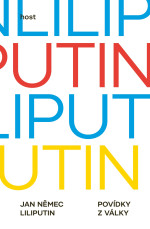Poet and prose writer, recipient of the European Union Prize for Literature (2014) and the Czech Book Award (2014), he was also nominated for a Magnesia Litera (2014) in the prose category and the Josef Škvorecký Award (2014). He has also been nominated for the Jiří Orten Award (2010). His works have been published (or the rights sold) in nine different languages including Italian, Polish and Hungarian.
Jan Němec

A Piece for Four Hands
Hra pro čtyři ruce

First Life
První život
| Title | Publisher | Year | Selected published translations | Awards |
|---|---|---|---|---|
| Lilliputin: Tales from a War (Liliputin: Povídky z války) | Host | 2022 | ||
| Ways of Writing about Love (Možnosti milostného románu) | Host | 2019 | ||
| A History of Light (Dějiny světla) | Host | 2013 | ES | DE | IT | HU | PL | BG |
2014 Czech Book Award 2014 European Union Prize for Literature |
| A Piece for Four Hands (Hra pro čtyři ruce) | Druhé město | 2009 | ||
| First Life (První život) | Větrné mlýny | 1997 |

A Piece for Four Hands
Hra pro čtyři ruce

First Life
První život
| Award | Year | Country |
|---|---|---|
| Czech Book Award | 2014 | Česká republika |
| European Union Prize for Literature | 2014 | EU |
Praise
[A History of Light] represents a remarkable and substantial experiment, offering an account about Drtikol, the history of photography as a new art form, the cultural climate of the incredibly interesting and turbulent period around the end of the Austro-Hungarian Empire, the First World War and the 1920s, but also about the narrative possibilities of contemporary novels.
—Petr A. Bílek
Respekt
He is the son of the writer Ludvík Němec. He studied sociology and religion at Masaryk University and dramaturgy at JAMU (Janáček Academy of Music and Performing Arts). His is an editor at Host publishing house and works for the magazine of the same name.
His poetry debut was the collection První život (First Life, Větrné mlýny, 2007). He was nominated for the Jiří Orten Award for the short-story collection Hra pro čtyři ruce (A Piece for Four Hands, Druhé město, 2009). In a review for iLiteratura.cz, Karolína Jirkalová wrote, “What is outstanding about the whole collection is its internal cohesion. The basis of this cohesion is indicated in the book’s subtitle – Málem milostné povídky (Almost Love Stories). Relationships form the subject for all of the stories – whether they failed to develop for varying reasons, or where fulfilment was found through some kind of vicarious object. The second situation is understandably more harrowing and not only because of the number of semantic and symbolic associations which it creates. All of the stories are narrated from the perspective of a man who creates the image of a goddess in his mind and then transfers that onto a real woman.” Němec has had other short stories published in collections and anthologies.
The novel Dějiny světla (A History of Light, Host, 2013) was acclaimed by both critics and readers alike. It tells the story of the photographer František Drtikol. In a review for the magazine Respekt Petr A. Bílek wrote, “The whole novel is a remarkable and substantial experiment which offers an account of Drtikol, the history of photography as a new art form, the cultural climate of the incredibly interesting and turbulent period around the end of the Austro-Hungarian Empire, the First World War and the 1920s, but it also shows us the narrative possibilities of the contemporary novel. And as I’ve already mentioned Illies’s novel 1913: The Year Before the Storm, it is worth adding that Jan Němec has written a more than worthy Czech counterpart.” The book was awarded the European Union Prize for Literature and the Czech Book Award, and the rights have been sold to many countries. Němec explained his fascination with Drtikol that, “Drtikol left when in actual fact he was at the very top, demonstrating the courage to give up what he had based his livelihood on. He gave up the symbol on which he had based his art in favour of the direct search for truth. He radically changed his life and became a spiritual teacher for the second part of his life. His pupils speak of him as being the first patriarch of Czech Buddhism. And this is the fascinating thing: the first man in our country to exhibit a female nude is also the same man who translated the Tibetan Book of the Dead into Czech.”



